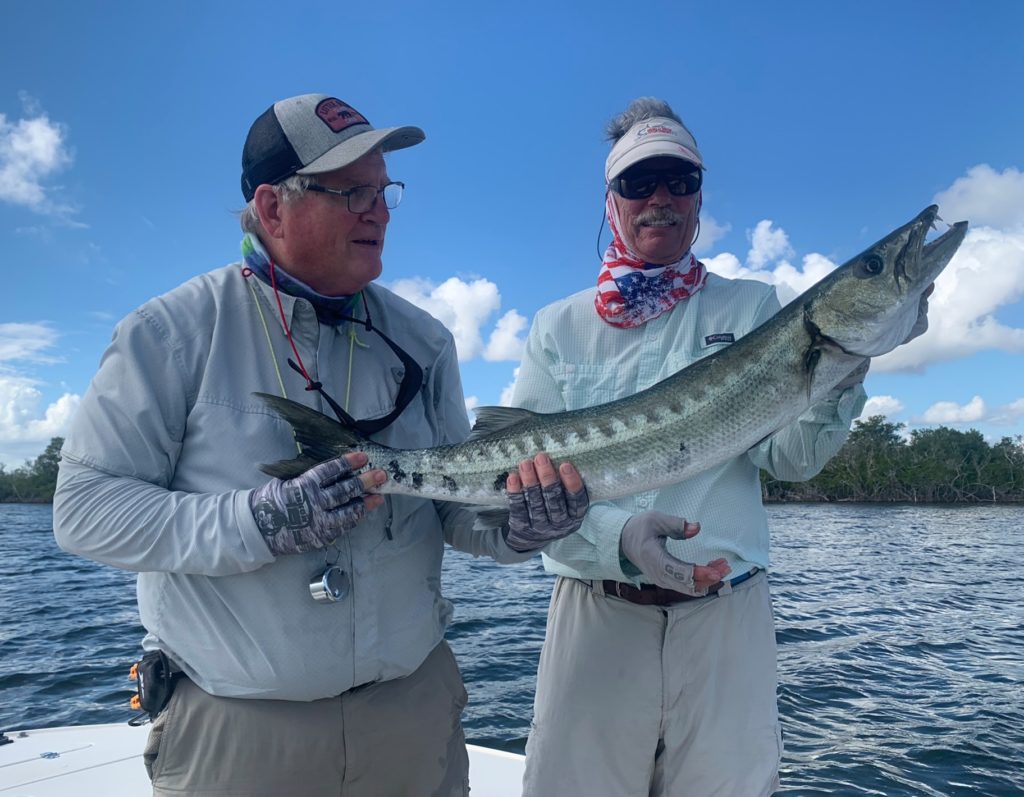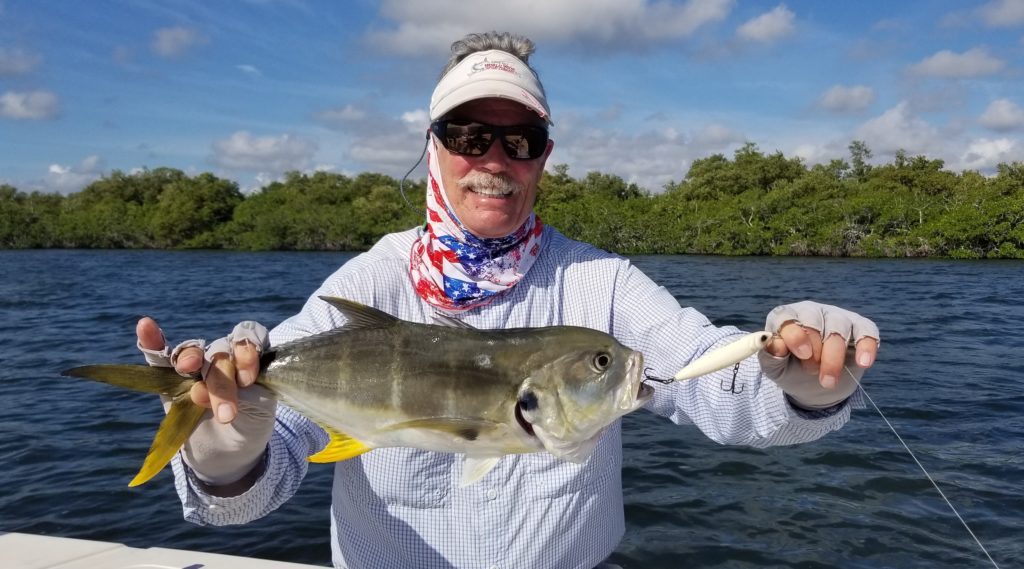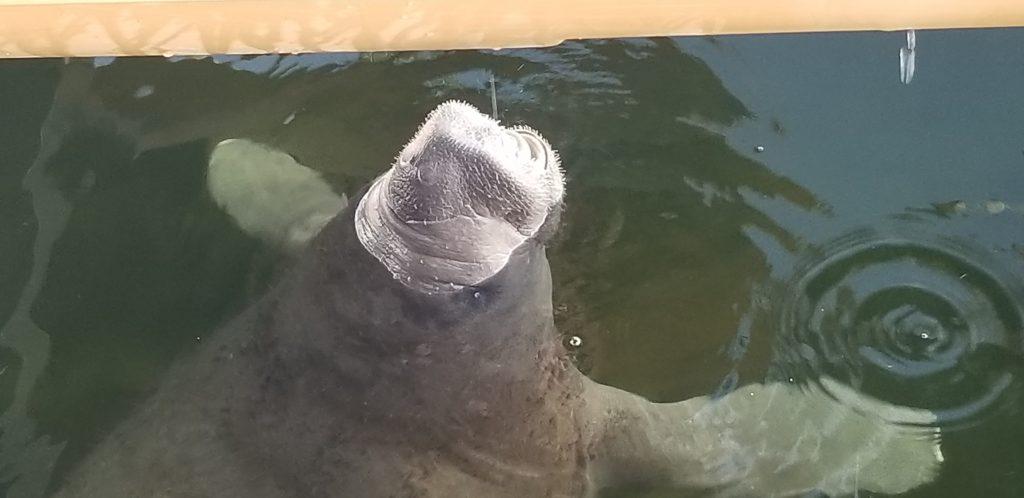

KEY LARGO, FLORIDA—The lure had just descended from a long, arcing cast when the water exploded. A fish, a very large fish, burst through the surface and danced on its tail in a showy attempt to shake the lure.
At the other end of the line, an experienced fisherman recognized that his considerable skills were about to be put to the test by a very worthy opponent. By any standards, this was a fish of a lifetime.
“Tarpon!” exclaimed a fellow angler while watching the spectacle unfold.
After what seemed an almost impossible amount of time standing on its tail, the lengthy fish slid beneath the water, the sharp bend in the fishing rod proof that the lure was holding firm. Angler Mort Bank, Bismarck, kept pressure on the fish, but was careful not to be to aggressive.
“I think it’s a snook,” said Bank while playing the fish.
The water was shallow, perhaps three feet deep at the boat. The fish was hooked close to the mangrove-lined shore in about a foot of water. Within a few minutes, the fish came within sight in the water near the boat.
“It is a snook!” remarked Mark Braun, Bismarck. “And a big one!”
Braun was at the back of the boat and Bank at the front. The snook came past the boat from back to front, its tell-tale black lateral line leaving no doubt what it was. The hump on its shoulder was immense. This was a massive snook. Excitement gripped the fishermen.
For a few intense moments Bank maneuvered the trophy-class snook around the front of the boat. It seemed he had the advantage and that the monster fish would soon be hoisted from the water. But the snook had other plans.
With a quick twist and a few kicks of its broad tail, the snook surged toward the shoreline and the protection of the mangrove roots. Bank had seen this reaction before, but never with a fish of this size and power. If the snook reached the entanglement of the mangroves the battle would be lost.
The expression on Bank’s face revealed he knew the fish had taken charge. There was little he could do other than hang on and hope for the best. This time the snook won, snapping the fishing line. It reached the shoreline where it lay in six inches of water, exhausted from the experience.

“Just look at that!” said Braun. “That’s one giant snook!”
Bank was focused on the shoreline and slight indentation where the fish was hooked.
“I know where he lives. I’ll be back,” remarked Bank.
Welcome to the world of saltwater fishing, where anything can and usually does happen. No two days are the same. Ever. And fishermen know it.
“You never know what’s next,” said Bank. “It could be a shark, a barracuda, a tarpon, a snook, and, for whatever reason, saltwater fish seem to fight ten times harder than any freshwater fish you’ll ever catch.”
Bank concentrates on fishing the famed flats of the Florida Keys, usually in one to three feet of water with a preference for surface lures that produce electrifying strikes.
“I love fishing shallow water. A lot of exciting things happen shallow,” stated Bank.
“In saltwater fishing it’s hard telling what’s going to be on the other end of the line,” added Braun. “You just really don’t know. Saltwater fish fight like you can’t believe. In freshwater we go after northerns or walleyes or bluegills. Here you don’t know what you catch until you get it close to the boat. As far as fight, there’s no comparison whatsoever.”
Of course, the two North Dakota residents never lose their appreciation for their surroundings, a vast sea of blue and green waters usually sitting under a brilliant blue sky. During this week in December the temperature stayed between 75 and 80 degrees and the winds were light.

“There’s no place in the world like the Florida Keys,” said Braun. “I’ve had a chance to visit some islands and many other tropical paces. There’s nothing to compare to the Keys.”
Bank, a member of both the North Dakota Fishing Hall of Fame and the National Freshwater Fishing Hall of Fame, has fished extensively his entire life from the northern-most reaches of Canada to the equatorial regions. Yet, he rates the Florida Keys at the top of his list.
“The fish get really big. We get sharks that are 10 to 12 feet long, tarpon that get up to 250 pounds, barracuda up to 50 pounds with a set of teeth like no one has ever seen,” said Bank. “It’s variety. I just love it and can’t get enough of it.”